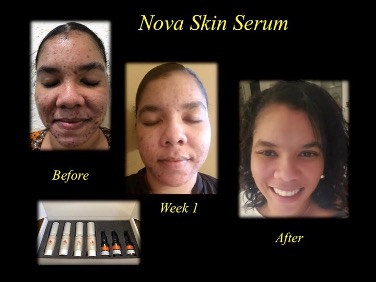
Novi Skin CRP: The Ultimate in Personal Skin Regeneration
Novi Skin CRP utilizes your own growth factors, and regenerative cells to safely stimulate the production of collagen and elastin, the building blocks for skin's strength and elasticity.

1. Natural approach
Cytokine Rich Plasma (CRP) uses the body’s own healing proteins by extracting a small sample of blood, removing red and white blood cells, concentrating regenerative proteins, and applying them to the skin daily.
- Biocompatible and safe: Since the growth factors are derived from your own body, there's a minimal risk of allergic reactions or side effects compared to treatments involving synthetic materials or chemicals.
2. Stimulates collagen and elastin production
- Boosts collagen synthesis: Growth factors in CRP trigger the skin's natural collagen production process, which is crucial for maintaining skin's firmness and elasticity.
- Enhances skin's structure: Increased collagen and elastin help reduce the appearance of fine lines and wrinkles and improve skin elasticity.
3. Improves skin texture and tone
- Promotes cell turnover: CRP stimulates skin cell turnover, leading to fresh, healthy skin cell growth.
- Addresses imperfections: It can help minimize hyperpigmentation, reduce fine lines, and fade acne scars, resulting in a smoother, more even-toned complexion.
4. Accelerates skin healing and reduces inflammation
- Speeds up recovery: The growth factors and proteins in CRP can accelerate the healing process for damaged skin, including after cosmetic procedures or sun damage.
- Soothes irritation: It can reduce redness, inflammation, and irritation, making it beneficial for sensitive skin conditions like rosacea.
5. Minimally invasive with long-lasting benefits
- Gentle procedure: CRP facials are considered minimally invasive with minimal to no downtime, allowing individuals to return to their daily routines relatively quickly. However, with Novi Skin CRP you continue to apply your regenerative proteins daily.
- Sustained results: Unlike temporary solutions, CRP works at a cellular level to provide lasting improvements in skin quality, which continue to evolve for months after treatment.
6. Pairs well with other treatments
- Enhances effectiveness: CRP can complement and boost the results of other aesthetic treatments like microneedling, laser therapy, and even injectables like dermal fillers or Botox®.
The patient below, had cystic acne and these are her results 6 months after BioFacial and Novi Skin

The science of using your own cells
Growth factors are naturally occurring proteins that play a vital role in stimulating the production of collagen and elastin, the building blocks for skin's strength and elasticity. This process is crucial for maintaining skin health and combating signs of aging.
Here's how growth factors achieve this at the cellular level:
1. Signaling and receptor binding
- Growth factors act as messengers, binding to specific receptors located on the surface of target cells, primarily fibroblasts in the skin.
- Examples include Epidermal Growth Factor (EGF), Fibroblast Growth Factor (FGF), Transforming Growth Factor-beta (TGF-β), Platelet-Derived Growth Factor (PDGF), and Vascular Endothelial Growth Factor (VEGF).
- This binding initiates a cascade of intracellular signaling pathways within the cell.
2. Intracellular signaling cascades
- Binding of growth factors to receptors activates various intracellular signaling pathways, including the TGF-β/Smad pathway, according to the National Institutes of Health (NIH), PI3K/Akt pathway, and JAK/STAT pathways.
- These pathways are crucial for regulating gene expression, cell proliferation, differentiation, and metabolism.
- In the case of collagen and elastin, these pathways lead to the activation of genes involved in their synthesis.
3. Gene expression and protein synthesis
- Activated signaling pathways trigger the transcription of genes responsible for collagen production (e.g., COL1A1, COL1A2 for type I collagen) and elastin (e.g., tropoelastin).
- This leads to increased production of procollagen and tropoelastin in the rough endoplasmic reticulum.
4. Post-translational modifications and assembly
- Procollagen and tropoelastin undergo post-translational modifications, like hydroxylation and glycosylation.
- Procollagen molecules then associate to form a triple helix, which is secreted into the extracellular matrix.
- Tropoelastin is secreted and assembled onto microfibrils in the extracellular matrix, followed by cross-linking into mature elastic fibers with lysyl oxidase enzymes.
In summary, growth factors initiate a complex process at the cellular level, leading to increased
production of collagen and elastin. This communication system between growth factors and skin cells is essential for maintaining skin's youthful appearance and promoting natural repair and regeneration.
